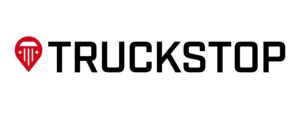Help keep fraud at bay and broker freight with speed and confidence.
Just when you think you’ve got a handle on freight fraud, scammers get sneakier, smarter, and even more insidious, using increasingly sophisticated tactics to wreak havoc on your livelihood, your reputation, and your financial stability.
Bad actors continue to rear their ugly heads throughout the freight industry, threatening to steal identities and payments and generally creating distrust between carriers and brokers. But vetting every carrier for legitimacy and to mitigate fraud takes time.
While the potential for freight fraud continues to pose a very real threat with disastrous consequences, it’s critical to be cognizant of a carrier’s status and behavior—which can change abruptly. Having a reliable carrier vetting tool that draws from current and comprehensive datasets helps you identify potential risks that can lead to loss of time and money.
So how do freight brokers perform the balancing act required as they teeter between hiring carriers fast to cover and move freight while protecting their businesses and moving their shipper customers’ goods expeditiously and safely? By implementing processes and technology that allow you to make decisions with confidence.
Leverage technology that prioritizes your security
Technology can do the heavy lifting to reduce manual efforts, avoid human error, and rapidly perform time-consuming tasks that should be a part of any thorough due diligence process.
“When comparing technology vs. an employee dedicated to carrier vetting, the ROI is in favor of the technology. It isn’t just ‘nice to have’ anymore. It’s a requirement to be successful in this business now.” –Lisa Haubenstock, VP of Customer Success, Truckstop
Here are some actions you can take now—supported by the right technology—to help you strengthen the security of your business.
- Require an invitation to register.
When onboarding carriers, require an invitation to register on your website. This can be an invaluable tool in weeding out scammers.
- Automate your business rules.
Filter all your preferences automatically to immediately de-certify those who don’t meet your qualifications. This automation mitigates the risk of human error and helps frontline employees working with carriers follow your standard operating procedure.
- Incorporate immediate notifications.
Because this industry moves quickly, your team needs prompt notification of any changes in safety authorizations. You could be talking to a carrier with valid insurance today, and tomorrow their insurance goes invalid.
- Use technology that accesses the best, most comprehensive data in the marketplace.
Leverage technology that identifies critical data points to help you make more informed and confident decisions. Assessing and weighing asset risk, contact risk, and digital risk can help you protect yourself from vulnerabilities.
The devil is in the data
Risk detection and fraud mitigation products are only as good as the data they draw from. Incomplete or limited data can lead to blind spots in risk detection and fall short of providing the breadth you need to do an exhaustive carrier analysis before hiring.
Then there’s data that’s just plain bad. Outdated, incorrect, and misleading. Low-quality data can lead to irreversible damage to your reputation as a broker.
But what about too much data? Is there such a thing as too much data?
The answer is both yes and no. As a broker today, you need to make informed decisions—and fast—to cover as many loads in as little time as possible. That’s how you grow your margins and achieve profitability. But that data needs to be sorted out.
To help protect your business while making speedy hiring decisions, you need access to every quality data point available—and a tool that helps you get the quick insights you need to help determine whether to vet deeper, discontinue, or strengthen a carrier relationship.
Truckstop’s Risk Factors is the only carrier vetting solution that analyzes Truckstop’s vast data— including data —so you can tap into the carrier data points you need to help pinpoint potential fraud indicators.
You know your business best and have different carrier requirements and risk thresholds for each load. Risk Factors is the only risk-indicator and fraud mitigation tool that analyzes Truckstop’s vast proprietary, licensed, public data. Based on this information, it then delivers a summary of a carrier’s potential risk indicators in one easy-to-read, color-coded bar, with a convenient visual indicator color coded in high, medium, and low categories.
A carrier’s identified risk level indicates data changes that brokers should be aware of when making hiring decisions. You should always conduct additional vetting in line with your carrier selection policies before hiring a carrier. Aiding you or your team when deciding whether to hire, vet that carrier further, or discontinue the relationship. This functionality goes a long way toward helping brokers build and grow carrier networks they can trust.
Now more than ever, trust matters in freight
Strategic theft continues to threaten the supply chain, with reported loss values exceeding $34 M in Q2 of 2024 alone. Specifically, the rise of fraudulent carriers in the freight market is posing significant challenges for freight brokers. This rampant increase is costing brokers lost revenue and damaged reputations.
As a first line of defense, brokers are taking proactive steps to protect themselves and their partnered carriers with the help of carrier vetting technology. By leveraging cutting-edge tools, brokers can drastically reduce the risk of fraud. Want to see the difference these tools can make? Try Truckstop Risk Factors for free with a 14-day trial and experience the help of enhanced security firsthand.


